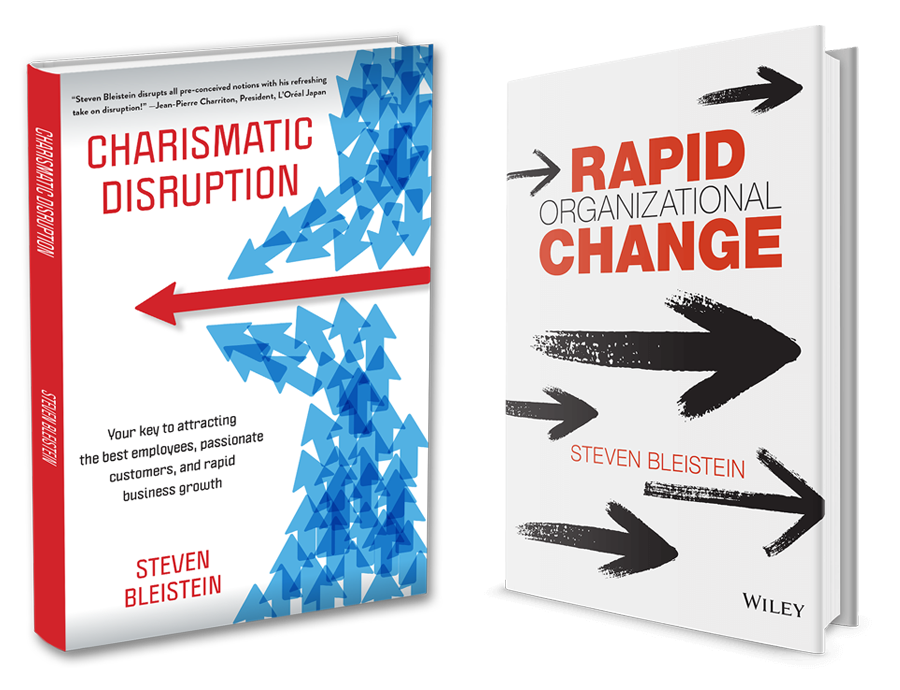[:en]Engagement Survey Use and Misuse[:ja]エンゲージメントサーベイの誤った使い方[:]

[:en]Leaders cannot engage people. People must engage themselves. All a leader can do is clear the way. Despite this, I often find overreaching conclusions from employee engagement surveys about leader’s capability that ought not be drawn, and decisions based on those conclusions that ought not be made. Engagement is either in the nature of a person or it is not. Some employees will never be engaged no matter what you say or do because the business you want is not what they want. That’s fine, but perhaps they should be in a different role or in a different company. Other employees are simply disengaged from life, not just from your […]
[:en]Dramatic Strategic Change Manifesto[:ja]劇的な戦略的変革において知っておくべきこと[:]

[:en]CEOs often ask me how best to lead dramatic, strategic change knowing full well the kind of concerns, resistance, and doubt that such change can evoke in some staff. Below I list some of what advise.
[:en]The Acumen of Gender Diversity[:ja]ジェンダー・ダイバーシティーについての洞察[:]

[:en] Most global companies outside of Japan have targets for increasing numbers of women employees, particularly in management. And even in Japan where women are often given short shrift, more global companies now have such targets as well. However, the leaders of the most successful companies I know achieve their objective by doing things right that have nothing to do with women at all, and their businesses and all staff, both men and women, are better off as a result. If you are the leader of a business in Japan or anywhere else, whether your business is subject to diversity targets or not, below is what I advise.
[:en]Work Less and Boost Productivity[:ja]勤務時間を減らして生産性を上げる[:]

[:en]If you want to increase productivity in your business, work less not more. A division of Microsoft Japan reduced the work week from five days to four, closing the office Fridays for everyone, and found productivity jumped forty percent! Yes, that’s right. Microsoft in Japan—not Microsoft in the United States or elsewhere. If Microsoft Japan can boost productivity in this way, so can you in your business.
[:en]Throw Your Lot in[:ja]誰の側に立つか[:]

[:en]On the morning of March 11, 2011, I picked out a tie, checked myself in the mirror, and then left the house to go to Tokyo without knowing that I would never again leave that house the same way. It was only hours later that the massive 3/11 earthquake struck Japan and its deadly tsunami ensued.
変革を牽引する3つの柱

[:en]If you want traction for change among individuals in your organization, it is only when there are clear standards of performance or behavior, accountability to meet them, and support to help people succeed that a change can take hold. In my experience, a deficit in any one of these three will alter the way any change is treated and viewed, and will lose traction as a result.
「モチベーション」は過大評価されている

[:en]When a CEO asks me how to better motivate his or her employees to change, the focus is on the wrong thing. Motivation can get a person started, but only discipline can see him or her through to an outcome.
自分の決める戦略

The best military strategists always choose the terrain on which they will do battle, rather than allowing the enemy to choose for them. So, in business, why would you possibly allow others to define the topography of your business environment instead of choosing the topography yourself? Yet, that is often precisely what business people do.
[:en]There is No Japanese Mindset[:ja]日本人特有の考え方などというものはない[:]

[:en]Nationality and national culture are not granular enough to explain behavior. There is no “Japanese mindset.” I have traveled to more than twenty countries, and lived outside my native United States for almost my entire adult life. I speak Japanese and French fluently, and just enough Italian, German, and Mandarin Chinese to get myself into trouble. When I put my mind to it, I can even fake Spanish—and people understand me! I have worked with and known people from all over the world. Yet, I have never known any single person who could be described as typical of the country from which they come, because it is not nationality that […]
[:en]Thriving in Volatile Times[:ja]不安定な時代にも成功するには[:]

[:en] As we emerge from the state of emergency and enter a period of recovery, now is the time to make your business thrive, not just survive. Below are five behaviors of my most successful clients that have helped them hit the ground running and stay at the top of their game.

